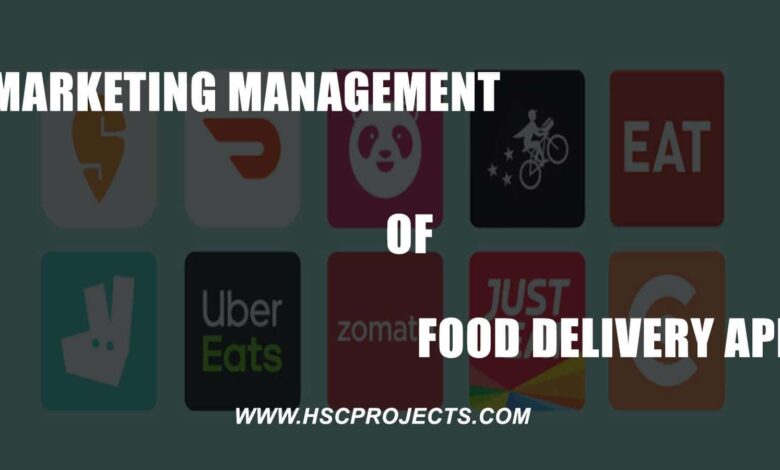
Marketing Management of Food Delivery App
MARKETING MANAGEMENT:

Marketing Management is the directing of an organisation’s resources to develop and implement the best possible strategy to reach its desired consumer segment to maximise the sale of a particulars product or service.
Five Marketing Management Concepts:
- Production Concept:
The production concept is used when the demand for a product is higher than its supply. The philosophy here is, “Supply creates its demand.” Therefore, the focus is on manufacturing more development to make sure it is widely available
- Product Concept:
Contrary to the production, this concept assumes the customer. Value products of a higher quality or opposed to price and availability. therefore
The focus is more on quality, less on quantity. The idea of the product concept is that. If you are selling an excellent quality product, minimal marketing will be required to sell it.
- Selling Concept:
Where the production and product concept focuses on manufacturing, the selling concept focuses on the making of an actual sale. The number one focus for the manager is to make money, no matter the quality needs of consumer supply or demand. Because of this, the selling concept entails very aggressive marketing.
- Marketing Concept:
The marketing concept works on that fulfil their needs.” A manager that takes the marketing approach will conduct extensive market research to determine the needs of consumers and how to fulfil them better than competitors.
- Social Concept:
Marketing managers with this approach are also concerned about society’s well-being and fuel a responsibility to tend to the world around them. The social concept creates a balance of social and environmental welfare, customer relationships, and sales.
THE 4 Ps OF MARKETING:
- PRODUCT
- PRICE
- PLACE
- PROMOTION
Product:
The product is either a tangible good or an intangible service that meets a specific customer’s need or demand. All products follow a logical product life cycle, and makers must understand and plan for various stages and their unique challenges. It is key to understand those problems that the product is attempting to solve. The benefits offered by the product and all its features need to be understood, and the unique selling proposition of the product needs to be studied.
Price:
Price covers the actual amount the end-user is expected to pay for a product. How a product is priced will affect how it sells. This is linked to what the product’s perceived value is to the customer rather than an accurate costing of the product price also be affected by distribution plans, value chain costs and makeups, and how competitors rival a product.
Promotion:
The marketing communication strategies and techniques all fall under the promotion heading. These may include advertising, sales promotions, special offers and public relations. Whatever channel is used must be suitable for the product, the price and the end-user it is marketed to. It is essential to differentiate between marketing and promotion. Promotion is just the communication aspect of the entire function.
Place:
Place or placement has to do with how the product will be provided to the customer Distribution is a critical element of the station. The placement strategy will help across what channel is the most suited to a product. How the end-user accesses the product also needs to complement the rest of the product strategy.
INTRODUCTION:
Online food ordering is ordering food from a website or other application. The product can be either ready to eat food (e.g. directly from a kitchen) or food that has not been specially prepared for direct consumption. Online food delivery has emerged as one of the fast-paced developments in the e-commerce space. This sector has revolutionised the entire outlook of the food industry as customers now have the privilege to choose from a variety of cuisines anywhere anytime from a range of restaurants visited online. Moreover, customer flexibilities in the form of no minimum order value and various options like internet banking, digital wallets and cash on delivery have enhanced the convenience of all consumer activities. India’s online food business segment reached as high as USD 750 million in 2017, registering a YOY revenue growth of 150 % (2016-17) approved 140 % (2014).
COMPETITORS:
Swiggy :
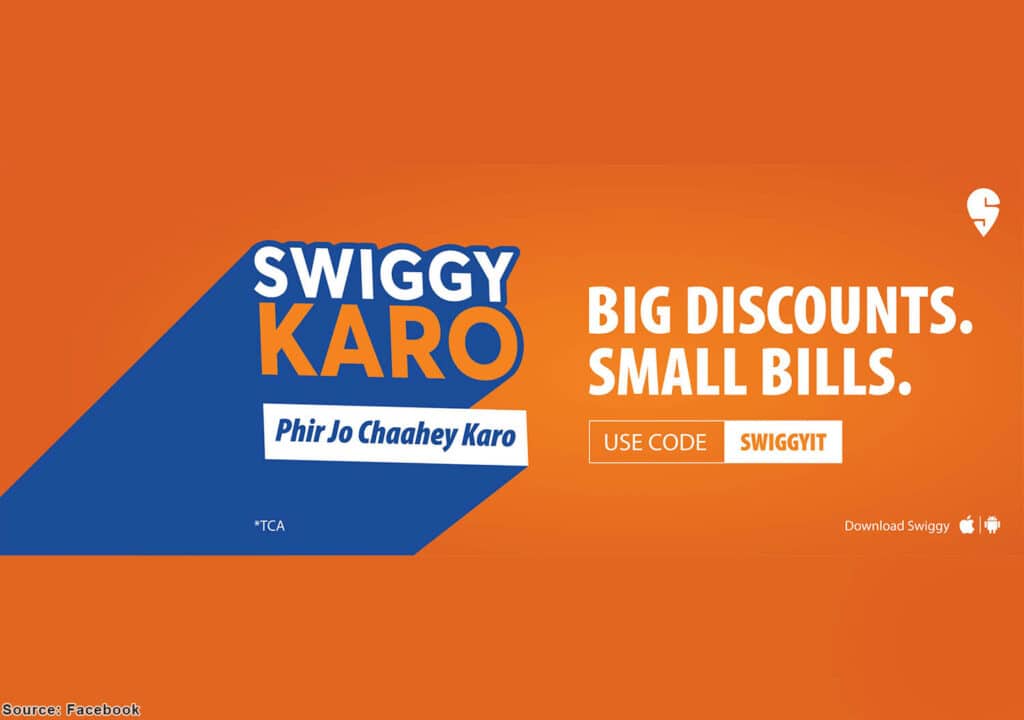
- Swiggy is India’s most prominent and highest valued online food ordering and delivery platform, founded in 2014. Swiggy is based in Bangalore, India, and as of March 2019, it was operating in 100 Indian cities. In early 2019, Swiggy expanded into general product deliveries under Swiggy stores.
In September 2019, it launched an instant pickup and dropped service-Swigy Go. It is used for a diverse array of items, Laundry, and document/ parcel deliveries.
Tagline:
Swiggy karo, phir jo chahe karo!
Zomato:
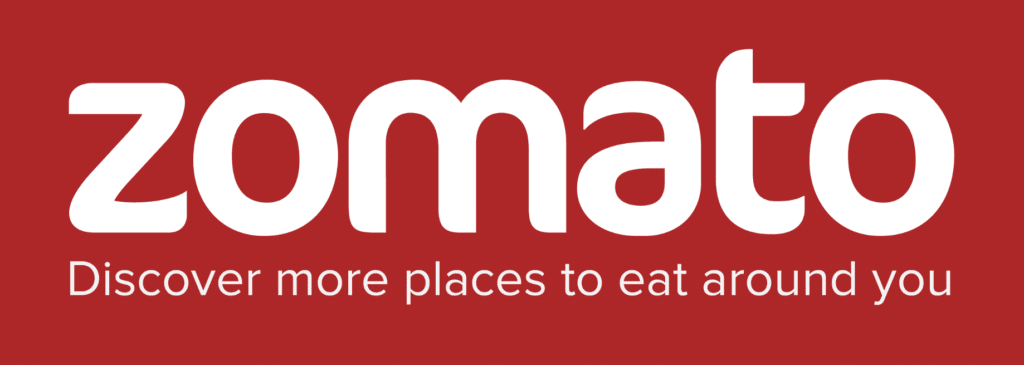
Zomato was founded as Foodiebay in 2008 and was renames Zomato on 18 January 2010 as Zomato Media Pvt Ltd. In 2011, Zomato expanded across India to Delhi, Mumbai, Bangalore, Chennai, Pune & Kolkata. In 2012, the company expanded operations internationally in several countries, including the UAE, Sri Lanka, Qatar, the UK, Philippines & South Africa. Zomato is an Indian restaurant aggregate for food delivery start-up founded by Decpinder Goyal and Pankaj Chaddar in 2008. It also began grocery delivery amid covid-19 and is available in 24 countries & 1000 cities.
Tagline:
Discover more places to eat around you.
USP:
Content sets Zomato apart-the only restaurant & nightlife guides with memes, pictures and map locations.
Uber Eats:
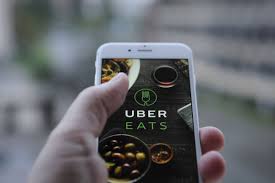
Uber Eats parent company Uber was founded in 2009 by Gassett camp & Travis Kalanick. The company began food delivery in august 2014 with the launch of the uber-fresh service in Santa Monica, California. In 2015, the platform was renamed UberEATS, and ordering software was released as its application. This app allows you to search for food categories, locations, or restaurants. Browse orders and track E-commerce apps that have found a better stand today. The success of this app inspired several other food delivery apps to enter the market.
Tagline:
Where lifestyle meets logistics
USP:
It offers seamless travel, with the rider walking away after arriving at his destination.
FoodPanda:
Foodpanda (stylised as foodpanda) is a mobile food delivery marketplace owned by Berlin-based company Delivery Hero SE and operates in 50 countries. It is primarily active in Asia pacific, Bulgaria and Romania. It is headquartered in Berlin, Germany. The service allows users to select from local restaurants and place orders via its mobile app and its website. The company has partnered with over 80,000 delivery sides. Foodpanda’s business in India was acquired by Indian cab aggregator Ola on 29 December 2017 for an undisclosed amount.
Tagline:
Take the first bite.
USP:
Lied up with over 4000 restaurant content sets apart foodpanda from competitors’ restaurant & nightlife guides with memes, pictures, and map locations a full time live chat support.
Grubhub:
Grubhub has the nation’s most significant number of restaurants to choose from. Every store is included In the app for you to choose the best. The customer service is 24X7 for users’ convenience. Perks- the newest feature of Grubhub-helps you find all the deals running in restaurants nearby. Some of the exclusive rewards & deals make Grubhub even more attractive to the users. Grubhub has been built using the latest UX design trends to impress the customers.
Provided nearly $6 billion in gross food sales to
- Local takeout restaurants in 2019.
- Processes more than 66,8000 daily orders
- Sever 30 million active drivers
- Sent more than $3 billion in total tips to drivers.
MY PRODUCT:
Nature Of Product:
My product is a mobile application for online food ordering from nearby restraints, cafes and food joints. It offers fast delivery of ordered items at the doorstep of customers.
Name Of The Product:
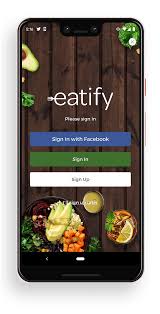
Eatify
Tagline:
Delicious meal delivered with just a few clicks!
Features:
- Fast online food delivery
- Great facility for customers
- Easy food businesses
- Improve food business
- Overcome the old procedures
- Easy information refreshing
- Backup information.
FEATURES OF THE SERVICE:
- 24/7 Delivery option
- Pre-order your next meal in advance
- Re-ordering your favourite meals
- Eat e-gifts on occasions.
- Payment options like Paypal, android pay, and credit/debit cards.
- Get coupons, promos & deals
- Track your order in Relative,
- Order scheduling
- Push notification
- No minimum order value,
- Faster deliveries
- Charges Nominal fees
- Add your food request
- Share your food experience, and give reviews ratings.
IMPACT OF COVID-19:
As the country slowly and steady materialises from the lockdown to embrace what many of us refer to as the ‘new normal,’ the food service and delivery industry, which encompasses the cloud kitchen or delivery-only kitchens in India, are putting their best foot and start operations after a gap of three months.
Throughout the Lockdown phase, online food and grocery deliveries became the sole lifetime that modern-day customers have come to depend on & rely on. Even after reaching the 5th phase of lockdown, many prefer to order food online to avert stepping outside for dining. The escalating demand for online food delivery has facilitated the birth of delivery-only restaurants or virtual restaurants, which are gaining popularity in India’s F & B space. These delivery only restaurants do not have any dining space and depend only on online orders placed through food apps, which are the next big thing.
Dinner, who in the pre-COVID phase would prefer dining out, is now scaling up on takeaways, and hygiene has become a key factor.
WHY DID I CHOOSE THIS SERVICE?
The online food delivery market is growing up in tandem with evolving lifestyle patterns and eating habits of Indians. Hectic work schedules and a rise in disposables income have popularised food delivery, especially in urban areas.
In recent years, working women have increased in the Indian workforce, especially in the city-based organised sectors. As a result, the number of double-income families is also rising with both working patterns and maintaining hectic working schedules. It becomes difficult for people to get time and energy to cook at home. Moreover, the dual-income scenario has increased the overall spending capacity of the families. Also, the key players like Swiggy and Zomato keep announcing lucrative offers for the customers, both existing and new, to keep the stiff competition in the online food ordering market.
Rapid digitalisation and growth in both in online buyer base and spending will help India’s online food industry to become an $8 billion market by 2022—growing at a CAGR of 25-30%
The Google and Boston Consulting Group (BCG) report revealed that variety in cuisines (35%) was one of the top reasons for recurrent use of online food ordering apps, followed by goods discounts and convenience.
SWOT ANALYSIS:

SWOT analysis is a framework used to evaluate a company’s competitive position
and standards for strengths, weaknesses, opportunities, and Threats of a business.
Strengths:
Describe what an organisation excels at and separates it from the competition, things like a strong brand, loyal customer base, strong balance sheet, unique technology & so on.
Weaknesses:
Step an organisation to give its best. They are means to remain competitive enough; things like higher than average industry turnover, high debt levels, inadequate supply chain etc.
Opportunities:
Refers to favourable external factors that an organisation can use to gain a competitive advantage.
Threats:
Refer to factors that have the potential to harm an organisation.
LOGO:
A logo combines tent and visual imaginary that serves two purposes. It tells people the company’s name, and it creates a graphic symbol that represents your business.
Some logos have influential symbolic associations connected to people’s memory.
A logo is important because :
- Reveals your Identity
- Distinguishes you from the competition
- Facilitates brand loyalty
- Can be everywhere
- Invites new customers to get to know you all.
PRICING:

For Consumers:
- We’ll allow free downloading of our mobile application to all the consumers, including ios and android users.
- Since charges for delivery of orders will be applicable as follows :
The distance of delivery up to 5 Km: Rs 50
The distance of delivery above 5 Km: Rs 70
Free delivery on the first five orders from the mobile app
For Restaurants:
- Restaurants, cafes and food joints will get a pre-registration to list their menu on our app.
- The first month will be free, and subsequently, subscription plans will be available to them, depending on their requirements and capacity to fulfilling the prevailing demands.
GRADING:
Grading is the process of sorting individual units of a product into well-defined classes or grades of quality. The goods are graded or sorted into different lots by the specified standards. The established standards lay down the grades of the product. In the case of manufactured goods, uniform quality is set in different units. Thus, grading involves dividing products into classes made up of units possessing similar characteristics of size and quality. And standardisation refers to setting up basic measures or standards to which the products must conform and taking steps to ensure that the goods produced aadhar to these standards. Standard reflects desirable features of a product in terms of its design, weight, colour, etc. Grading & standardisation will be done on the app to give convenience to the customers to facilitate their preferences & choices.
BRANDING:
The process involved in creating a unique name and image for a product in the consumer’s mind, through an advertising campaign with a consistent theme, branding aims to establish a significant and differentiated presence in the market that attracts and retains loyal customers.
- Branding promotes Recognition
- A brand sets us apart from the competition
- Brading sets expectations
- A strong brand adds value.
PACKAGING:
It refers to designing the package, such as containers, wrappers etc. It plays a significant role in the marketing success or failure of many products, especially non-durable consumer products.
Level Of Packaging:
- Primary package: primary package refers to the product’s immediate package. In some instances, such a package is retained till the consumer is ready to use the product.
- Secondary packaging: it’s the additional packing given to a product to protect it. Such packaging is retained till the consumer wants to start using the product.
- Transportation packing: packages essential for storing, identifying or transporting. In my case, the packaging would be of the restaurant itself. The app will provide printed tapes with our brand name & logo to pack the food.
CHANNELS OF DISTRIBUTION:
A distribution channel is a chain of business or intermediaries through which a good or service passes until it reaches the end consumer. It can include wholesalers, retailers, distributors and even the internet itself. Channels are broken into direct and indirect forms, with a direct channel allowing the consumer to buy the good from the manufacturer and an “indirect” channel enabling the consumer. The 2nd channel is where the producers sell directly to a retailer, who then sells the producer’s product to the end consumer.
The 3rd and 4th channels are direct to consumer models where the producer sells its product directly to an end consumer.
Our app will also involve the usage of the 2nd channel of distribution. It will deliver the food prepared by the food joints to the final consumers.
SOCIAL MESSAGE:
Corporate Social Responsibility (CSR) is an automated business model that helps a company be socially accountable to itself, its stakeholder and the public. By practising corporate social responsibility, also called corporate citizenship, companies can be conscious of their impact on all aspects of society, including economic, social and environmental. To engage in CSR means that in the ordinary course of business, a company is operating in ways that enhance society and the environment instead of contributing negatively to them.
HOW WILL WE FULFILL THE SOCIAL RESPONSIBILITY:
- The delivery boys will travel on E-bicycles to cover distances of up to 5 Km.
- A good percentage of our profit will be donated to physically disabled people.
- CNG vehicles will be used for delivery purposes to contribute to a reduction in Delhi’s pollution.
PROMOTIONAL SCHEMES:

- Young celebrity endorsement
- E-vouchers and discount codes shall be given
- festive discounts and occasional promotes
- collaboration with google play store and ios app store for free app downloads.
- Five free deliveries will be given to new users (up to 5 km of distance)
- Advertisements on social media platforms
CONCLUSION:
From this marketing research, I have understood the importance of the marketing mix. I have learnt to take the decisions regarding the 4ps of a marketing and the following things too :
- Gathering information & analysing the market
- How to design a product
- Branding, labelling and packaging of a product
- Pricing a product
- Marketing and promotion of a product, etc.
BIBLIOGRAPHY:
- https://www.Kbmanage.com/concept/marketing-management
https://www.iobnet.co.in/iobpay/entry.do?dislinkmerid=DCADEL&dislinkcatcd=EDU - https://en.m.wikipedia.org/wiki/zomato
- https://www.investopedia.com/terms/f/four-ps.asp
- https://www.stalista.com/outlook/374/119/online/food-delivery/india
- https://www.livemint.com/technology/tech-news/indian-online -food-delivery-market-to hit-8-by-2020-report.html
CERTIFICATE:
This is to certify that class —of—-school has completed his project under my school supervision. He has taken proper care and shown the utmost sincerity in completing this project. I certify that this project is up to my expectations and as per the guidelines issued by CBSE.
ACKNOWLEDGEMENT:
I would like to express my special thanks to my teacher and our principal, who gave me this golden opportunity to do this terrific project on the topic, which also helped me do a lot of research, and I came to know about so many new things. I am thankful to them. Secondly, I would like to thank my family and friends who helped me in finalising this project within the limited time frame.
In order to download the PDF, You must follow on Youtube. Once done, Click on Submit
Follow On YoutubeSubscribed? Click on Confirm
Download Marketing Management of Food Delivery App PDF






